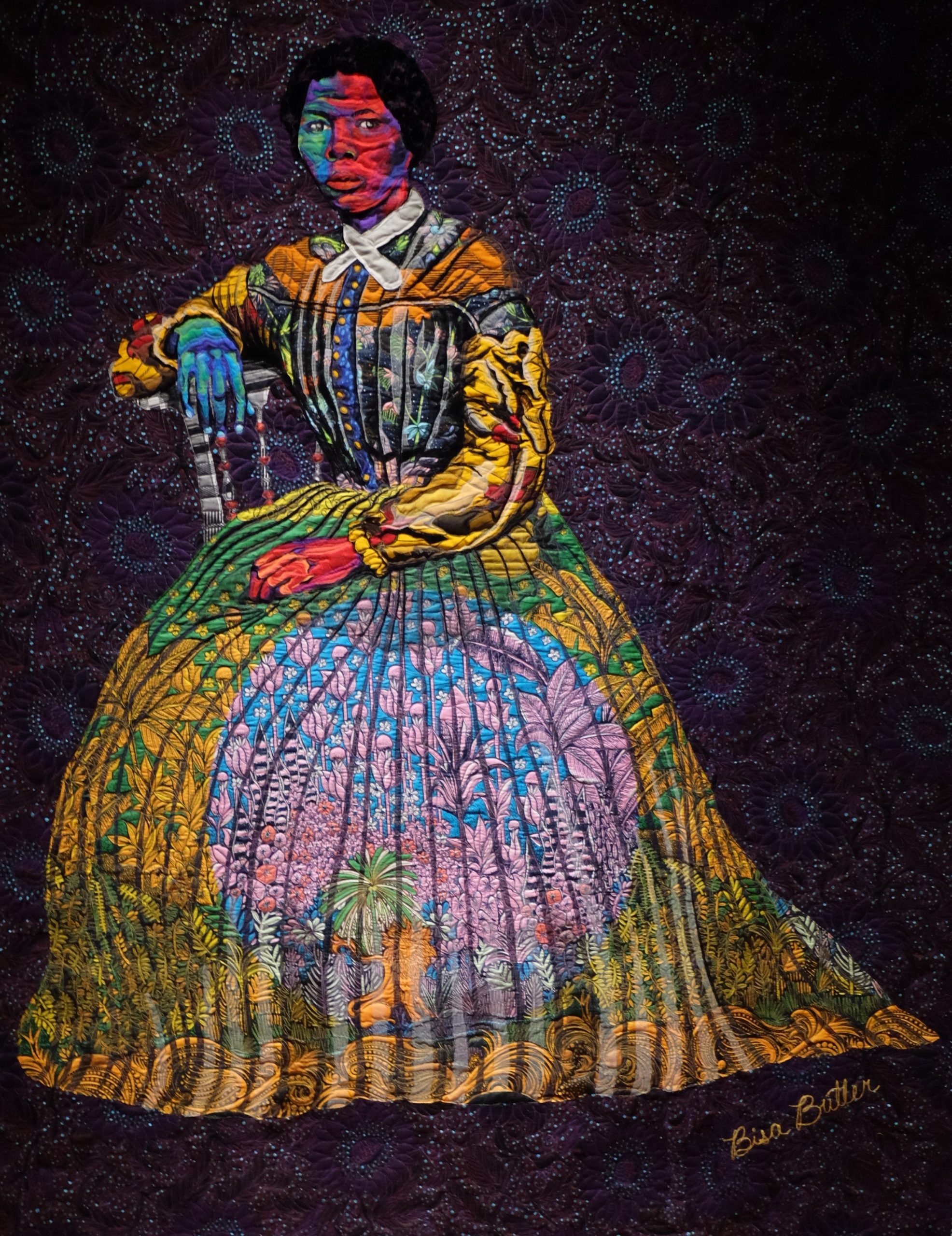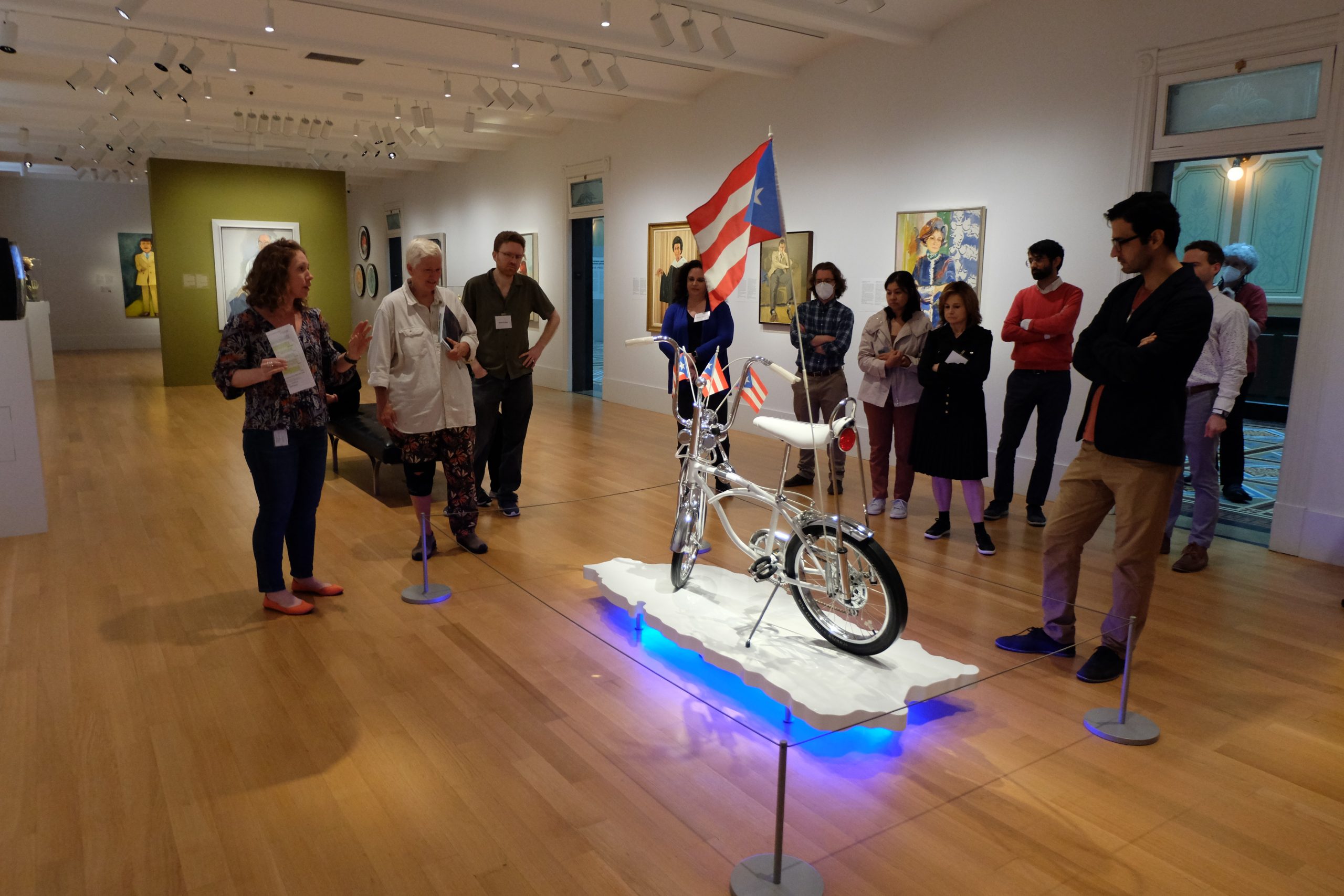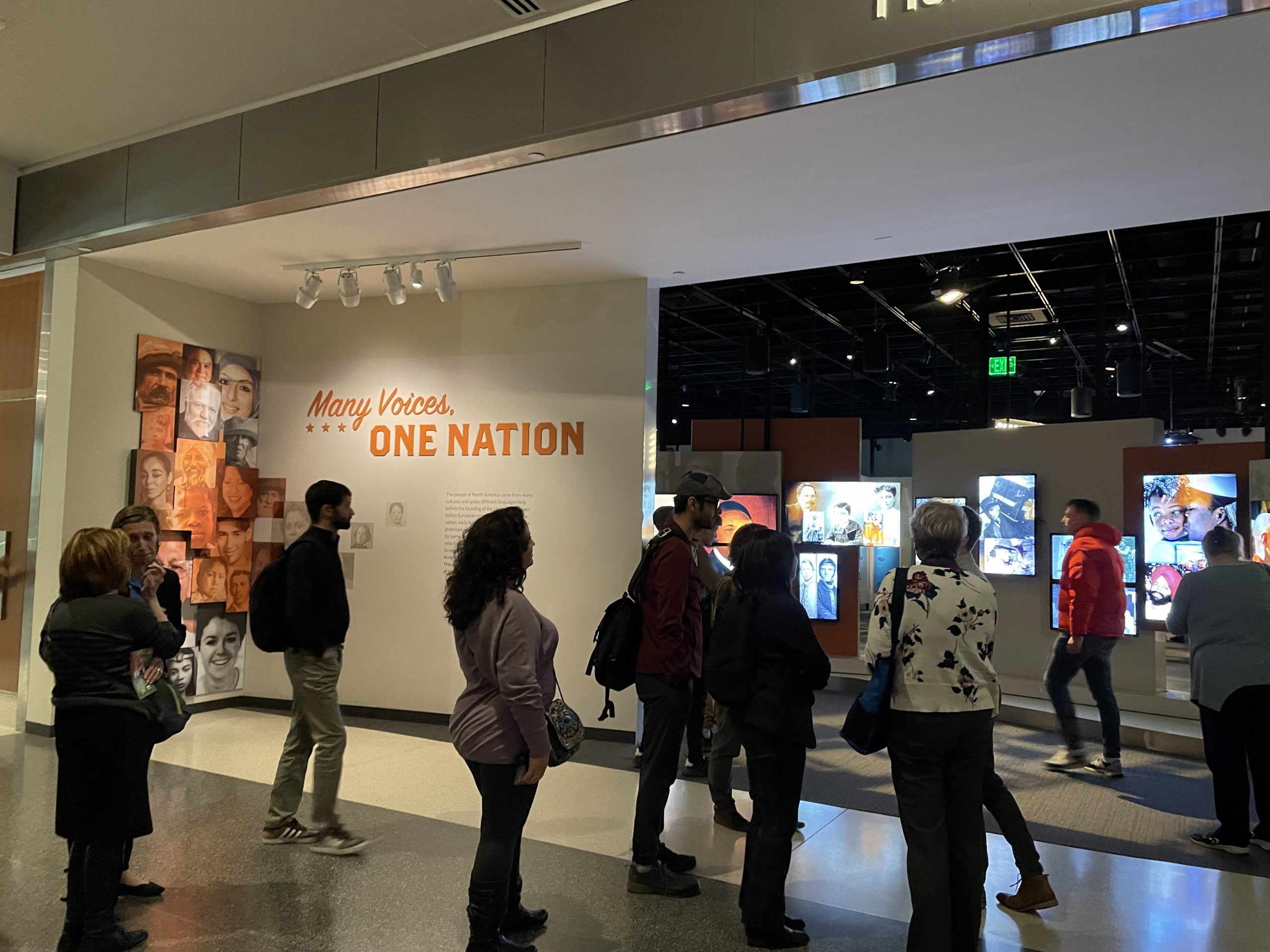When I last visited the National Museum of African American History and Culture, I started…
The Leadership Team of the Smithsonian Faculty Fellowship is delighted to announce the theme for 2023! Please take a look at the theme and some ideas for how you might use in your classes. Is this your year???
The Evolving Role of Museums: Preserving the Past, Portraying the Present, and Shaping the Future
“For museums, the choice is either resilience or irrelevance.”
LaNesha DeBardelaben, President and CEO, Northwest African American Museum, Seattle, Washington
Museums are gateways to magic with visitors given a chance to excavate the past, spotlight the present, and imagine the future. Museums, like all of society, continue to reconsider their mission and how best to accomplish it. Even in the face of the pandemic, the Smithsonian continues to demonstrate its resilience and relevance..
Smithsonian curators and staff have developed programs that extend beyond their buildings, with community outreach programs and expansion of their digital resources. They are analyzing what is “right”/”wrong” within their spaces, what is missing, who is missing, and what the future of museums holds for “us all”? In addition, they continue to contemplate “Whose objects are these anyway?” and the return of “priceless” and culturally sensitive objects to their communities. “The Smithsonian needs to lead morally as well as legally,” said Smithsonian Secretary Lonnie G. Bunch III on June 3 after the Board of Regents voted to return 29 magnificent objects from the Kingdom of Benin, looted by the British military in 1897.
In addition, the Smithsonian also must face how to examine and tackle a host of current challenges that divide the U.S. Museums have realized that they need to share both beautiful and curious objects, to find ways for visitors to see themselves in the exhibits, and discover meaning in the objects and stories they experience. Successful museums can inspire us to act on what we’ve learned, to thrive on emotions museum visits have generated, and to build empathy for the different perspectives we’ve encountered. What makes an object iconic, and why does it so appeal to me?
Today, with widespread demands for diversity, equality, justice, accessibility, and dignity becoming centerstage in the public eye, museums are focusing on and directing resources to meet the desires and needs of a varied public. Many museums have adapted by redoubling outreach programs and significantly expanding virtual offerings, bringing the museums to people in creative and innovative ways. Museums are more relevant than ever, and they have demonstrated a willingness to change. Their role is not to tell a single story but to showcase the power of many voices, many stories as they foster critical conversations and create a more inclusive museum culture. We are the museum and vice versa.
Today, there is much new to engage and support all museum visitors. The most recent addition to the Smithsonian’s is the opening of The Molina Family Latino Gallery inside the National Museum of American History. The Gallery is the first step in the planned opening of a new museum, which will illuminate U.S. Latinos’ historical and cultural legacies and will be followed by the Smithsonian American Women’s History Museum in Washington, D.C.
These two join the much-heralded National Museum of African American History, where a wonderful new offering, Culture’s Reckoning and Reconciliation, “Our Shared Future: Reckoning with our Racial Past,” a collaborative, multidisciplinary platform, allows us to explore how race has informed each of us.
Additionally, the Smithsonian’s Learning Lab is a virtual gateway to millions of the Institution’s digital images, recordings, text, videos, etc. in history, art and culture, and the sciences—all for free. With its varied audiences in mind, the Smithsonian’s goal is to be accessible to all by expanding its accommodations and programs for visitors with disabilities, including those with vision and hearing loss, autism, Alzheimer’s, dementia, etc.
Through these types of expanded offering, more and more of our stories can and will be told.
The 2023 Smithsonian Faculty Fellowship offers a different kind of teaching and learning experience for faculty and students in celebration of the more than 25-year partnership between Montgomery College and the Smithsonian Institution, more recently with the Smithsonian Office of Educational Technology. A large number of our students have never entered a museum of any kind. The 2023 Smithsonian Faculty Fellows most certainly change the lives of many MC students by inspiring their own museum stories, as 225 former MC professors have done before, bringing more than 25,000 of our students, faculty, and friends to the Smithsonian’s vast riches and opportunities. Is this your year to become a Smithsonian Faculty Fellow? Please visit the Paul Peck Humanities Institute (see Smithsonian Faculty Fellowship) for more information on this year’s theme, past years’ experiences, and ideas how you might use the theme in your classroom. Let’s take this journey together. We are waiting for you!!
Some Ideas How You Can Use This Year’s Theme in YOUR Classroom:
Anthropology– Whose bones are these?
Archaeology– What kinds of artifacts are best equipped to survive the digital age? What are the iconic Smithsonian objects and exhibits, and why do they resonate with so many?Architecture- How would we design a museum for the future?
Art– What is missing? How to create and curate an exhibit?
Biology- Making the science of viruses and powerful subjects like climate change, extinction, and evolution/adaption accessible to engage students in future planning. Is there a role for zoos of the world, including Washington’s National Zoo, and what will be the greatest threats for their survival and the survival of the animals they house and protect? How might science students contribute to finding solutions to extinction of both animals and indigenous peoples?
Chemistry– What role does chemistry play in the preservation and exhibition of objects?
Economics and Business, Math- Economic toll of the pandemics on the museum world and the importance of museum survival: the role of invention and innovation in shaping responses to economic and social crises. What will be the future of the air, space, and transportation sectors mean for the economic well-being of the U.S. and the world?
Education– making programs accessible to learners with special needs, how to teach with museums for any age student
ELAP- Where do I fit? Where is my story? What is home? How can we develop an exhibit from the stories in our class?
English-Reading and Communication– What is the danger of a single story? How do museum officials create labels for their exhibits: the power and importance of words? What does it mean to inclusive?
History– Correcting myths: rewriting the narrative in a more inclusive way; sharing the many voices of the past and how they inform the present and the future. What is the danger of a single story? How did objects, documents, etc. end up in museums; what is their importance in understanding not only the past but the present and future? How is the Smithsonian working with communities both in the U.S. and abroad to return or share ownership of items stolen or attained by other methods? Is there a place for museums in an ever-growing digital world?
Health– How does human behavior play a role in pandemics?
Interior Design/Architecture- What will tomorrow’s museums and exhibits look like? What must they do to serve diverse audiences?
Journalism, Media Arts and Technology– how does the media bring the Smithsonian to its to the people: newspapers/magazines, tv, podcasts, media arts, and social media coverage? How best to share inclusive stories/sensitive topics that engage audiences using Smithsonian resources?
Nutrition- What is the role of nutrition in the study of evolution?
Philosophy- Who owns the artifacts? What are the ethical challenges museums face today?
Photography– Who tells the stories captured in museum images? How do photographers capture events via stories? Why are images important? How do museums use images to tell stories?
Psychology– How do we encourage students to engage in critical conversations to foster understanding between diverse groups and develop a sense of community?
Sociology- How can an exhibit help us understand the development, organization, and functioning of social groups? How do we all learn from studying racial constructs?
Spanish– What is the difference in being Hispanic, Latino, or Latinx? How do artists portray the difference histories and stories of the various populations? Who are the artists, and what do they hope to create for their diverse audiences?
What can you think of?????





This Post Has 0 Comments